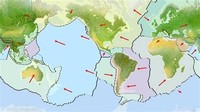Facts about Continents

Over geologic time, continents are periodically submerged under large epicontinental seas, and continental collisions result in a continent becoming attached to another continent.
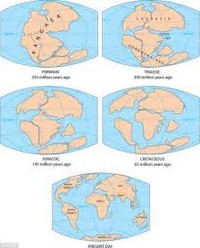
Similarly, the Earth's major landmasses today are actually washed upon by a single, continuous World Ocean, which is divided into a number of principal components by the continents and various human conceptual criteria.
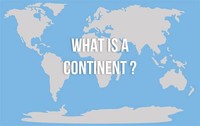
Continents may be defined as "large, continuous, discrete masses of land, ideally separated by expanses of water."

When continents are defined as discrete landmasses, embracing all the contiguous land of a body, then Asia, Europe and Africa form a single continent known by various names such as Africa-Eurasia.
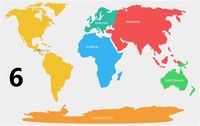
Several continents are defined not as absolutely distinct bodies but as "more or less discrete masses of land."

Other islands such as Great Britain were joined to the mainlands of their continents.
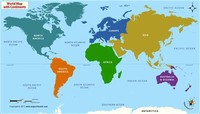
Others divided the continents by isthmuses, calling the continents "peninsulas."

From the mid-nineteenth century, United States atlases more commonly treated North and South America as separate continents, while atlases published in Europe usually considered them one continent.

The Olympic flag, devised in 1913, has five rings representing the five inhabited, participating continents, with the Americas being treated as one continent and Antarctica not included.

Eratosthenes, in the third century B.C.E., noted that some geographers divided the continents by rivers (the Nile and the Don), thus considering the continents to be "islands."

The division of the landmass of Eurasia into the separate continents of Asia and Europe is an anomaly with no basis in physical geography.

Of the seven most commonly recognized continents, only Antarctica and Australia are actually separated from other continents.

The margins of geologic continents are characterized by currently active, or relatively recent active mobile belts and deep troughs of accumulated marine or deltaic sediments.

North America and South America are separate continents, the connecting isthmus being largely the result of volcanism from relatively recent subduction tectonics.

Seven areas are commonly considered as continents: Asia, Africa, North America, South America, Antarctica, Europe, and Australia.
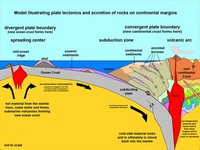
Some argue that continents are accretionary crustal "rafts" which, unlike the denser basaltic crust of the ocean basins, are not subjected to destruction through the plate tectonic process of subduction.

Geologists believe that there once existed on Earth one huge landmass which separated into the areas known today as continents.

The geological process and study of the movement, collision and division of continents, earlier known as continental drift, is known as plate tectonics.

